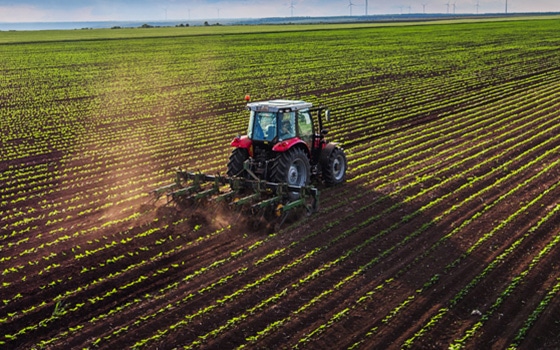-
InsightsInsight - Agriculture and Rural - POSTED: January 9 2015
The risk of investing in farmland
Mark Twain famously once declared “Buy land. They’re not making it anymore.” It appears that these wise words are being heeded by a broader swathe of investors, as private equity houses, investment banks, pension funds, hedge funds and oligarchs are allocating an increasing share of their portfolios into farm land. Sub-Saharan Africa has been a very popular recent investment destination, benefitting from a low entry point as well as the opportunity to develop a large scale operation from a very early stage.
- Share this article
- Print this article
-
-
Mark Twain famously once declared “Buy land. They’re not making it anymore.” It appears that these wise words are being heeded by a broader swathe of investors, as private equity houses, investment banks, pension funds, hedge funds and oligarchs are allocating an increasing share of their portfolios into farmland. Sub-Saharan Africa has been a very popular recent investment destination, benefitting from a low entry point as well as the opportunity to develop a large scale operation from a very early stage. Global food prices have rocketed over the last few years, and increasing wealth in frontier markets has meant changes towards more protein based diets, ensuring ample opportunities for arable and cattle farms. Although farms in Sub-Saharan Africa will involve more risk, including potential political instability, poor access to infrastructure or irrigation as well as issues surrounding challenges to ownership, the yields can be very attractive, with investors reaping returns of 15 or 20% in some cases.
Closer to home, farmland values have soared over the last decade, with Knight Frank putting the figure at 187% over a ten year period, and 15% over the last year. One of the main reasons for this is straightforward – demand is far outstripping supply. This can be particularly problematic for investors and funds, as high quality farmland will often be snapped up by existing landowners. The UK agricultural market is evolving and this makes it even more necessary for farm owners to increase the size of their estates – at Brachers we estimate that one family may need at least 1,000 acres to ensure an arable farm remains competitive. Choices for farm owners looking to expand are limited, as many will look to buy available land off adjoining properties – this naturally puts a premium on the land and the neighbouring landowner may well be able to sell the land for much more than it’s worth, simply due to its location.
Within Europe, only Denmark and Spain have seen average farmland prices drop over the last year or two, with upticks across the rest of the EU. Over the last decade, however, prices have grown across Britain, France, Italy and Germany. The Netherlands is the home of record EU farmland prices, which average €49,575 per hectare, compared to €18,962 in Britain, €19,400 in Italy and €22,267 in parts of Eastern German and €5,420 in France.*
As one may expect, growth within the UK varies significantly between different types of farmland and regions. Larger arable farms have seen strong growth, whilst smaller livestock farms – where buildings – both part of the working farm and residential – may well account for the majority of the holding’s value – have seen far weaker growth.
Analysis by Smiths Gore suggests that there is a significant variation between the marketing of farmland within the UK. The South West and East of England are the most active regions, with 19,300 acres and 18,000 acres marketed respectively this year, compared to 4,500 acres in the North East and 5,800 in the North West.
There are different routes to farm ownership. Private investors or High Net Worth individuals have been buying up UK farmland, with tax benefits seen as a contributing factor. However, farmers remain the predominant buyers of land. If an investor buys a farm, there will also be a particular risk if they don’t plan to farm the land themselves and contract the work out. They may alternatively choose to invest in a farmland fund, which will also help if they don’t have the upfront cash to buy farmland. However, some funds may not be suitable for the average investor, as they may not be covered by the UK compensation scheme and come with high annual and initial charges.
Uncertainty around the Common Agricultural Policy adds another level of complexity and risk. The requirement for greening on land in excess of 10 hectares to create ecological focus areas is set to be determined on a “case by case” basis. Prominent MEPs are urging delay to this scheme, over concerns that farmers will be left disadvantaged by unreasonable EU demands. Uncertainty around this initiative may spook potential buyers.
Whilst capital growth for UK farms has been very positive, it must be remembered that average yields have been very low – a paltry 1 – 2% – which may also discourage some potential investors. Although we do not expect the dramatic rises in farmland values to continue over the next decade, strong demand and limited supply of suitable farmland means that prices are likely to remain stable at the very least for the foreseeable future.
*Source – Eurostat
This content is correct at time of publication
Can we help?
Take a look at our Agriculture and Rural page for useful information, resources, guidance, details of our team and how we may be able to help you
-
Key contact:
Get in touch
Please fill out the below form or alternatively you can call us on 01622 690691

